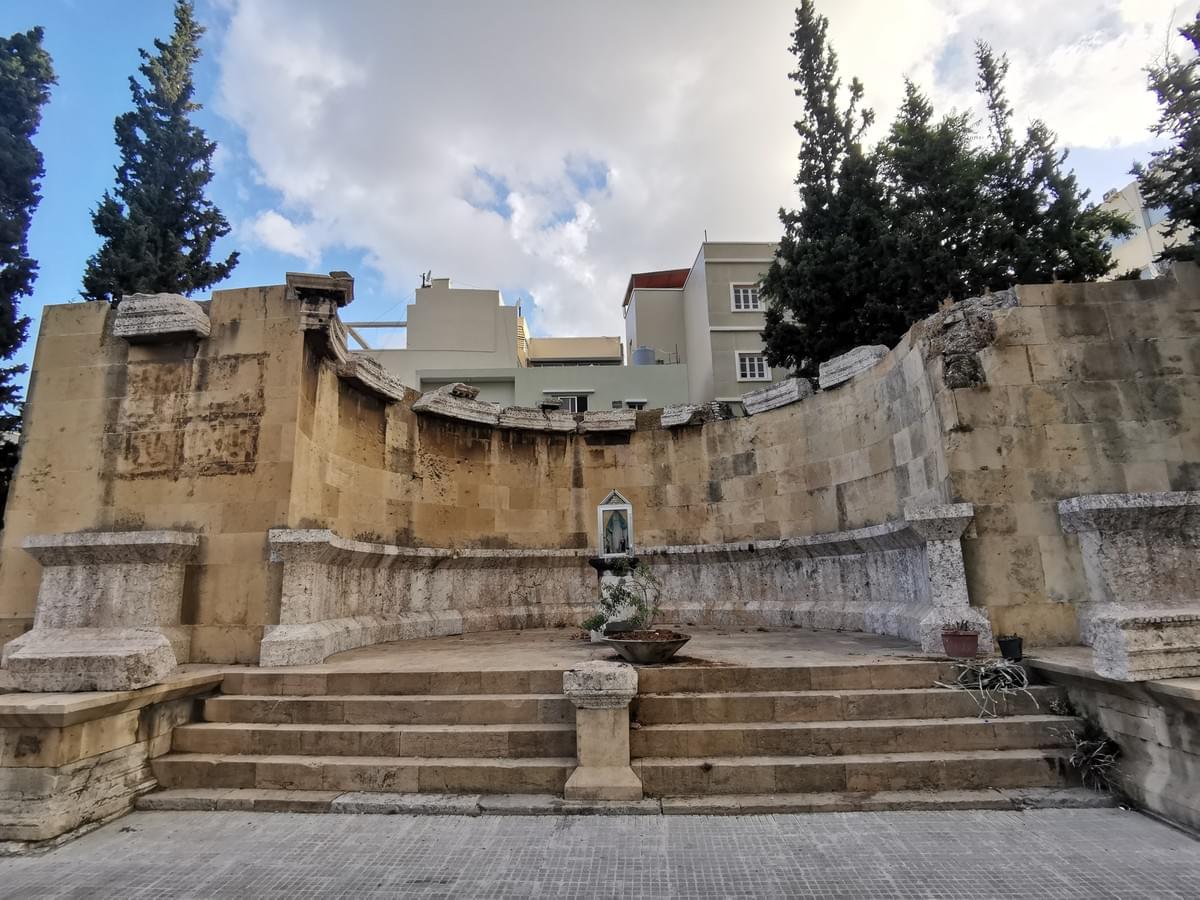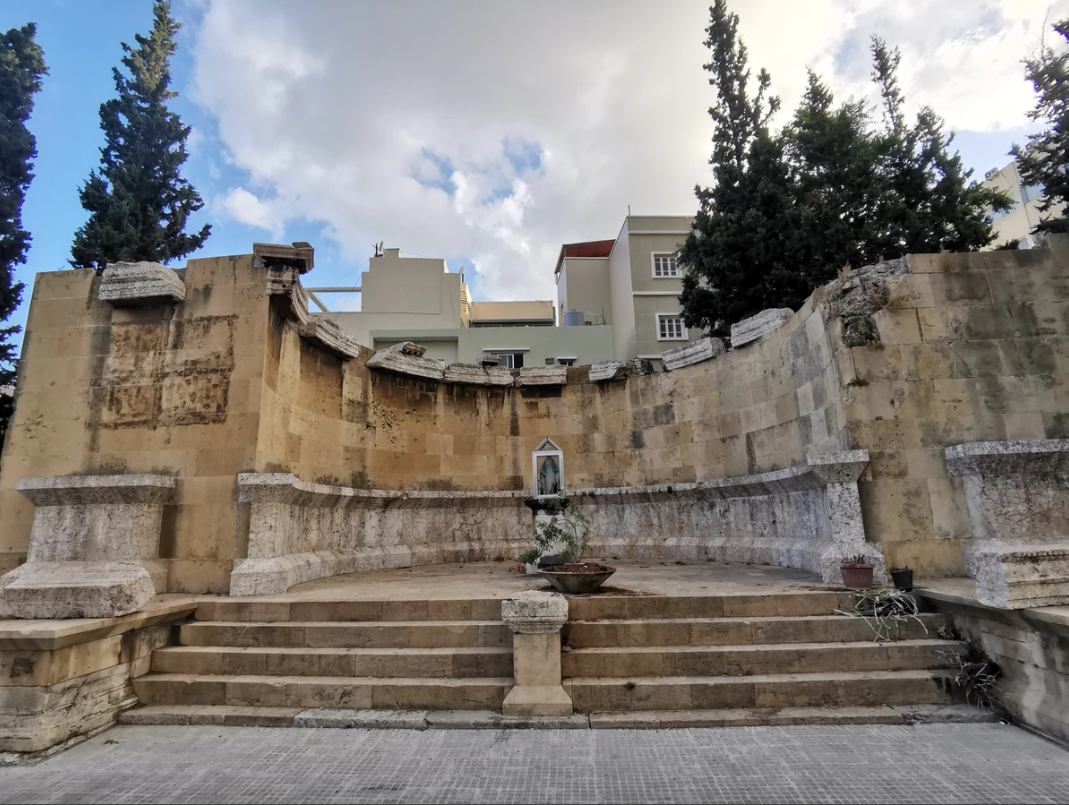Beirut houses a well-preserved Nymphaeum that testifies to the glory of the city during the Roman era.
Discovery
In the early 1950’s, the Director General of Antiquities undertook a rescue excavation at the intersection of Emir Bashir and Syria streets in Down-Town Beirut, on a plot that saw the construction of the Lazarite buildings.
The excavations unearthed the nymphaeum that was connected to the Cardo and Decumanus Maximus – the main colonnaded streets of Roman Berytus. (check the sktech at the end of the article)
The structure was relocated to Rmeil in the Karantina area – it is located about 200 meters after the Forum De Beyrouth on the right side of the highway.
Date
The construction of the nymphaeum is dated to the 2nd century AD, and was apparently reconstructed during the 6th century AD following the earthquake of 551 AD that destroyed most of the colony. This date is attested by an inscription on the architrave of the nymphaeum found during the excavation works. Unfortunately, the inscription was lost probably during the relocation process.
Structure
The nymphaeum generally serves as a sanctuary, a monumental fountain for public use, and/or an assembly chamber where weddings were held.
While it took several shapes and sizes in the Roman empire, the nymphaeum of Beirut is built in a semi-circular shape, topped by a frieze decorated with ornaments.
It is accessed by a staircase that was probably bordered on each side by two granite pink and grey, fluted and rounded columns topped by an arched roof – this is attested by the presence of the column’s bases on the staircase platform, and by a couple of column fragments preserved on the northern and southern side of the structure in a small garden.
A statue of Apollo (Greek god of archery, music and dance) may have been erected at the entrance of the nymphaeum, giving the fact that the statue was discovered right next to it, but this remains debatable.
Moreover, the discovery of mosaic fragments all around the structure suggests that it had beautiful mosaic floor decoration and parietal.
Following its relocation to Rmeil, the nymphaeum took its share from the Lebanese civil war where bullets and bomb shells can be seen on its walls.
Karim Sokhn
Tour Operator & Tour Guide
References:
*Jean Lauffray. BMB VII
*https://www.britannica.com/art/nymphaeum
*Greek Gods and a Roman Emperor, Scuplture in the Beirut Central District Archeology Project, Ans Braakenburg-van Breukelen
*Mosaiques D’un Quartier Sud De Beyrouth Antique (Sites Des Lazaristes), M.T. Olszewski, La Mosaique Greco-Romaine VII, Tome 1, Institut National du Patrimoine, Tunis 1999.






